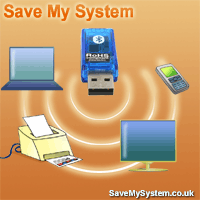Miniaturize GPS technology, fasten it to your wrist and apply it to athletics and you have the GPS running watch. Technology has made enormous strides over the past couple years and the Global Positioning System, or GPS, is a perfect example. GPS is a system of geosynchronous satellites that are used to triangulate your location to within about three meters of your position.
Since GPS running watches mingle computerized data collection with GPS tracking they contain the ability to gather, track, and retrieve information about your run. The data includes data about your route, how far you traveled, and your pace.
The information can be used as you run to help pace yourself. Also, it can be downloaded to your PC at the finish of your run to evaluate your improvement. The most flexible GPS running watches include multi-session features which permit you to contrast a number of runs.
A GPS running watch looks just like a regular digital watch, but somewhat bigger, because it uses a GPS transmitter built inside. GPS running watches can be programmed for a number of different workout types including interval workouts, simple time or distance workouts, calorie burn workouts, and heart rate workouts.
The GPS runner watch can be programmed to have one do a period of intense exercise, for instance three minutes of vigorous exercise, and then have you follow that with a one minute cool down or recovery cycle. This workout is called a step or interval workout.
A distance workout would merely record the distance you've run and alert you after you reached your objective. The timed workout function is just like a countdown timer. It alerts you as soon as a certain amount of time has gone by. A heart rate workout helps you keep your heart rate in a certain range and notifies you when your heart rate rises beyond a certain upper boundary or falls beneath a certain lower target. Lastly, for a calorie burn workout the GPS running watch would alert you when you have burned the amount of calories you programmed as a target.
A few of the voluntary functions of GPS runner watches include warm-up and cool-down settings, an altimeter which tracks inclines and declines and thermometers that can store data about the weather all through your run. Several GPS runner watches can even interface with foot pods you position in your shoes that record your step length and pace. They can connect with a heart monitor which records your pulse or heart rate so you regulate your effort in order to remain inside your desired training range. Several can download digital maps and mark the path you have gone in order to help one keep from getting lost.
If you train for biathlons or triathlons, many GPS runner watches can mount on your handlebars as well as on your wrist. A large amount of those include cadence and speed sensors that work with a bike. Other GPS runner watches are waterproof to 50 meters.
Since GPS running watches mingle computerized data collection with GPS tracking they contain the ability to gather, track, and retrieve information about your run. The data includes data about your route, how far you traveled, and your pace.
The information can be used as you run to help pace yourself. Also, it can be downloaded to your PC at the finish of your run to evaluate your improvement. The most flexible GPS running watches include multi-session features which permit you to contrast a number of runs.
A GPS running watch looks just like a regular digital watch, but somewhat bigger, because it uses a GPS transmitter built inside. GPS running watches can be programmed for a number of different workout types including interval workouts, simple time or distance workouts, calorie burn workouts, and heart rate workouts.
The GPS runner watch can be programmed to have one do a period of intense exercise, for instance three minutes of vigorous exercise, and then have you follow that with a one minute cool down or recovery cycle. This workout is called a step or interval workout.
A distance workout would merely record the distance you've run and alert you after you reached your objective. The timed workout function is just like a countdown timer. It alerts you as soon as a certain amount of time has gone by. A heart rate workout helps you keep your heart rate in a certain range and notifies you when your heart rate rises beyond a certain upper boundary or falls beneath a certain lower target. Lastly, for a calorie burn workout the GPS running watch would alert you when you have burned the amount of calories you programmed as a target.
A few of the voluntary functions of GPS runner watches include warm-up and cool-down settings, an altimeter which tracks inclines and declines and thermometers that can store data about the weather all through your run. Several GPS runner watches can even interface with foot pods you position in your shoes that record your step length and pace. They can connect with a heart monitor which records your pulse or heart rate so you regulate your effort in order to remain inside your desired training range. Several can download digital maps and mark the path you have gone in order to help one keep from getting lost.
If you train for biathlons or triathlons, many GPS runner watches can mount on your handlebars as well as on your wrist. A large amount of those include cadence and speed sensors that work with a bike. Other GPS runner watches are waterproof to 50 meters.

No comments:
Post a Comment